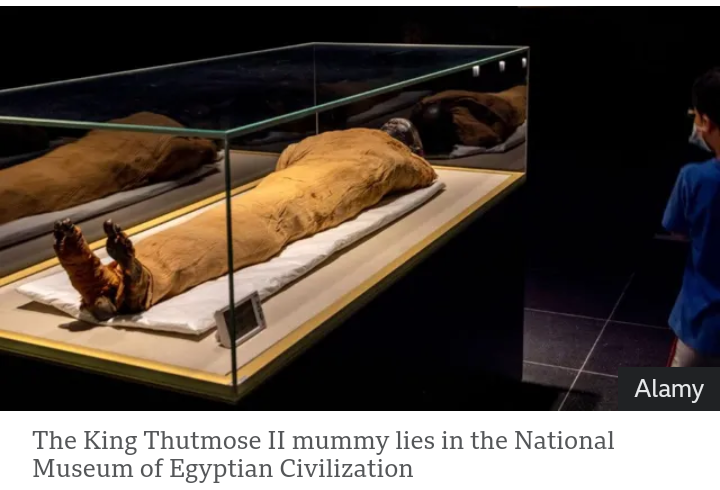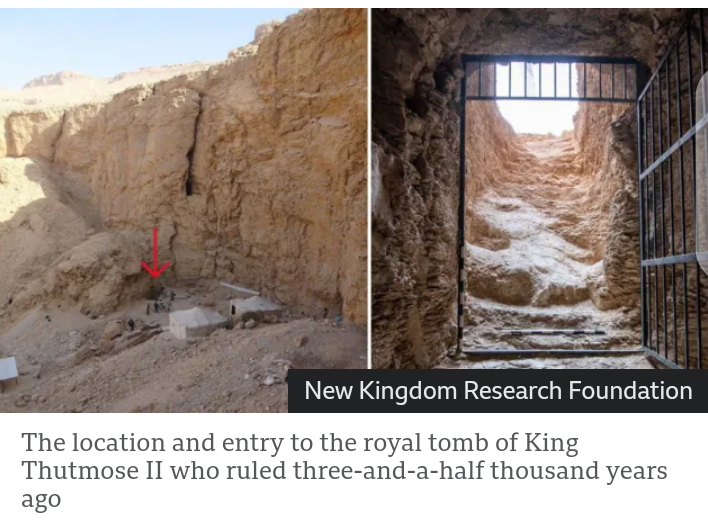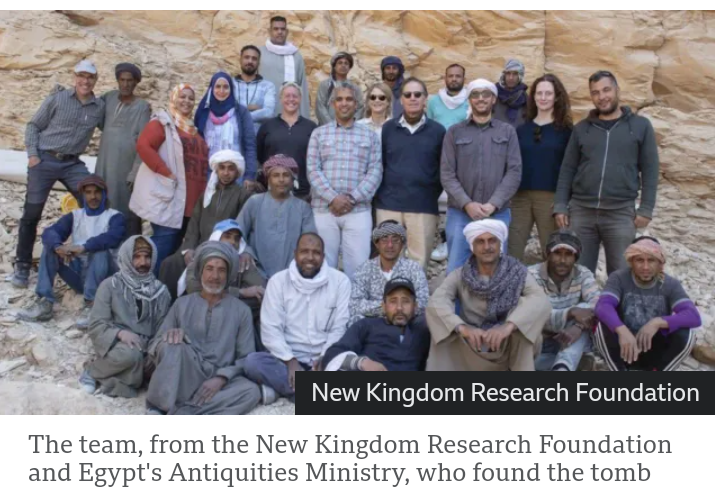Lost Tomb Of Pharaoh Thutmose II, Discovered In Egypt.
A British-Egyptian archaeological team has unearthed the long-lost tomb of Pharaoh Thutmose II, marking the first discovery of a pharaoh’s burial site since the famed tomb of Tutankhamun was found over a century ago.
The tomb, located in the Western Valleys of the Theban Necropolis near Luxor, had remained hidden for over 3,500 years. Previously, researchers believed the burial sites of 18th Dynasty pharaohs were situated more than two kilometres away, closer to the Valley of the Kings. However, the unexpected find in an area associated with royal women challenged long-standing theories about the dynasty’s burials.
A Historic Discovery
Dr Piers Litherland, field director of the excavation, described the emotional moment when his team entered the burial chamber and found evidence confirming it belonged to a king.
“Part of the ceiling was still intact: a blue-painted ceiling with yellow stars, a feature unique to royal tombs,” Dr Litherland explained. “It was overwhelming. When I emerged, I simply burst into tears.”

The discovery sheds light on one of ancient Egypt’s lingering mysteries—the location of early 18th Dynasty pharaohs’ tombs. While the mummified remains of Thutmose II were found two centuries ago, his original burial site had never been identified until now.
A Glimpse into Egypt’s Royal Past
Thutmose II, who ruled around 1493–1479 BC, was an ancestor of Tutankhamun and the husband of Queen Hatshepsut, one of Egypt’s most renowned female pharaohs. His tomb, featuring a grand staircase and a long descending corridor, had been blocked by flood debris and partially collapsed ceilings. The team had to crawl through a narrow passageway before reaching the burial chamber, where they found key decorative elements from the Amduat, an ancient Egyptian funerary text reserved for kings.

Despite these royal markings, the chamber was empty—not due to tomb raiders, but because it had been deliberately cleared in antiquity. The researchers determined that a flood, likely caused by a nearby waterfall, had damaged the tomb just years after the king’s burial. The contents were subsequently relocated to another site, which remains undiscovered.
While sifting through debris, the team uncovered fragments of alabaster jars inscribed with the names of Thutmose II and Hatshepsut—providing crucial evidence linking the tomb to the pharaoh.
The Search Continues
Dr Litherland’s team now believes they have clues about the location of the second tomb, which could still hold artefacts and treasures from Thutmose II’s burial.

The discovery is the culmination of over 12 years of research by the New Kingdom Research Foundation and Egypt’s Ministry of Tourism and Antiquities.
“This is the first royal tomb to be discovered since the ground-breaking find of King Tutankhamun’s burial chamber in 1922,” said Egypt’s Minister of Tourism and Antiquities, Sherif Fathy. “It is an extraordinary moment for Egyptology and a significant step in deepening our understanding of ancient history.”
With further excavations planned, the archaeological world eagerly awaits what secrets may yet be uncovered from this fascinating chapter of Egypt’s past.
Credit: The BBC


